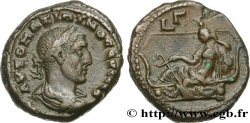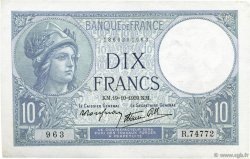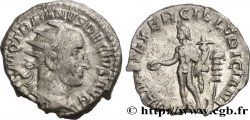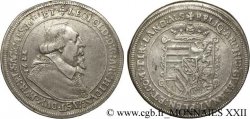brm_670973 - MAXIMINUS I THRAX Denier
120.00 €
Menge
In den Warenkorb

Type : Denier
Datum: avril - décembre
Datum: 235
Name der Münzstätte / Stadt : Roma
Metall : Silber
Der Feingehalt beträgt : 500 ‰
Durchmesser : 19,5 mm
Stempelstellung : 12 h.
Gewicht : 3,26 g.
Officine: 2e
Kommentare zum Erhaltungszustand:
Très bel exemplaire, centré. Superbe buste de Maximin Ier, bien détaillé. Patine grise
Vorderseite
Titulatur der Vorderseite IMP MAXIMINVS PIVS AVG.
Beschreibung Vorderseite Buste lauré, drapé et cuirassé de Maximin Ier à droite, vu de trois quarts en arrière (A*2) ; portrait B.
Übersetzung der Vorderseite “Imperator Maximinus Pius Augustus”, (L’empereur Maximin pieux auguste).
Rückseite
Titulatur der Rückseite FIDES - M-I-LITVM.
Beschreibung Rückseite Fides (la Fidélité) drapée, debout de face tournée à gauche, tenant deux enseignes militaires, “signa”.
Übersetzung der Rückseite “Fides Militum”, (La Fidélité des soldats).
Kommentare
Rubans de type 3. Ptéryges invisibles sous le paludamentum. Portrait B (militaire). La première émission se divise en deux phases : sur la première, la plus rare, les traits sont directement copiés sur ceux d’Alexandre Sévère ; ceux de la deuxième phase présentent un portrait idéalisé de Maximin Ier qui disparaît ensuite au profit du portrait B dit “militaire” avec le menton en galoche, proéminent.
Type 3 ribbons. Invisible pteryga under the paludamentum. Portrait B (military). The first emission is divided into two phases: on the first, the rarest, the features are directly copied from those of Alexander Severus; those of the second phase present an idealized portrait of Maximin I which then disappears in favor of the so-called “military” portrait B with the prominent galoshed chin
Type 3 ribbons. Invisible pteryga under the paludamentum. Portrait B (military). The first emission is divided into two phases: on the first, the rarest, the features are directly copied from those of Alexander Severus; those of the second phase present an idealized portrait of Maximin I which then disappears in favor of the so-called “military” portrait B with the prominent galoshed chin








 Berichten über einen Fehler
Berichten über einen Fehler Die Seite drucken
Die Seite drucken Teilen meiner Auswahl
Teilen meiner Auswahl Stellen Sie eine Frage
Stellen Sie eine Frage Einlieferung/Verkauf
Einlieferung/Verkauf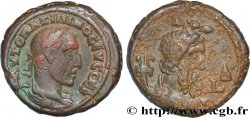
 Details
Details

